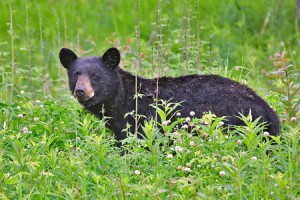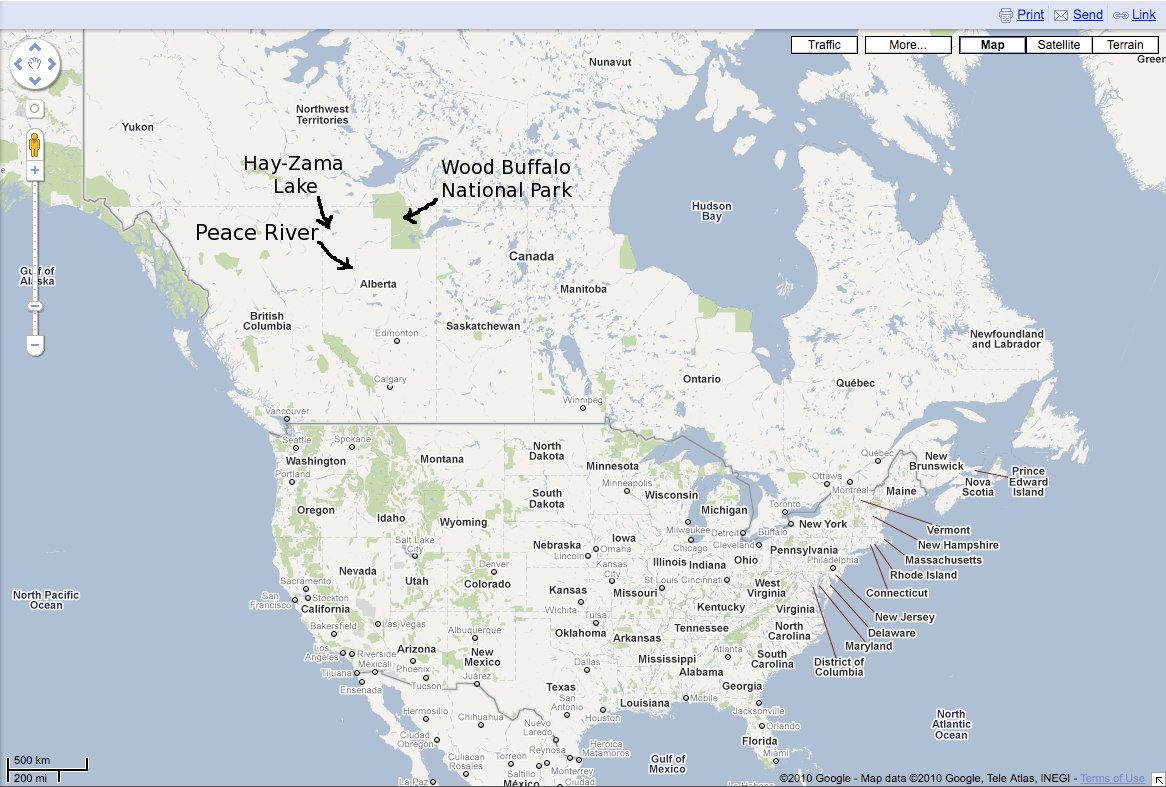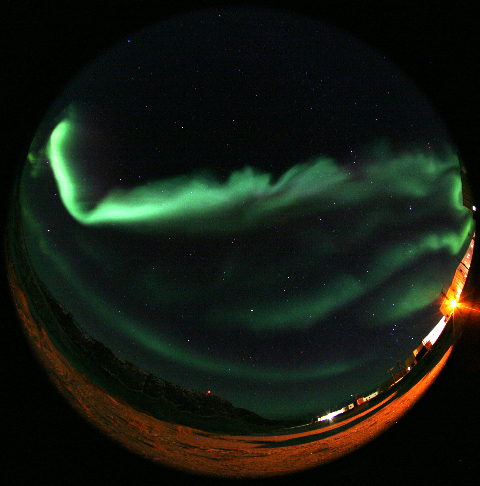So you thought bears were the only wildlife to worry about! Well, there’s more. These are the top 3 animals I suggest you be on the lookout for.
Wolves
Bears don’t bother me, but wolves… wolves come in packs! So unless I am in a “pack” of people, I feel nervous. In Nahanni, by Dick Turner (an excellent read!) there are stories of wolves hunting hunters and trappers (perhaps it was karma?!), and this was quite enough to scare me. Recently, I asked a trapper friend of mine, and he said that they aren’t
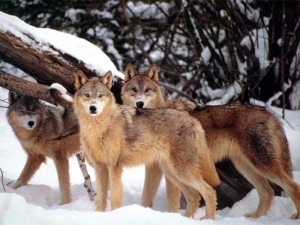
really that bad. They generally stay far away from people. A solid bonk on the head, or bridge of the nose, will do them in, if necessary. I don’t carry a gun, and I don’t think having one would be an advantage unless you are really comfortable using it. Aiming and missing just uses up your valuable time and brainpower — one of the few advantages we have over wildlife. (We are noticeably lacking pointy teeth and claws.)
Wolves really don’t like to be around human settlements, which explains why you’ve probably never seen one. Don’t worry — you still probably won’t. You might hear them though… let their cry sink into your soul — it’s pretty amazing. And then try to sleep! 🙂
Wolverine
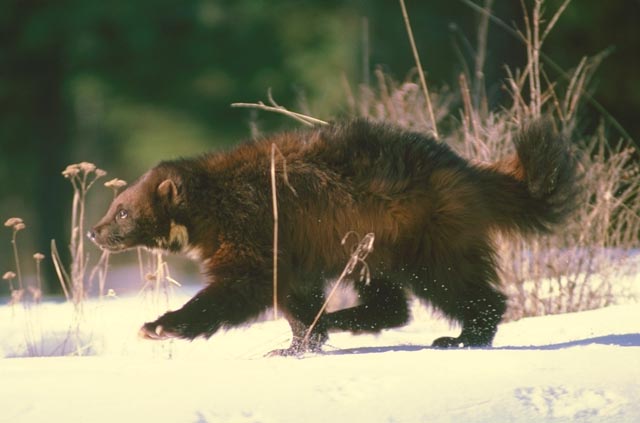
Completely unrelated to wolves, the wolverine is quite legendary for its fierceness. You do not want to meet one of these in the bush. About the size of a medium dog, and looking a bit like a bear with an inferiority complex, they are fast, fearless, and have pointy teeth and claws. They aren’t stupid either — no animal is — read this short webpage or go here or here for a little bit more info. Always keep your eyes out for animals you might be disturbing as you walk on the shores of the waters you paddle.
Mosquitos
Ok, I’m half-serious! You won’t need to worry about keeping an eye out for these… they’ll find you! They are attracted to the carbon dioxide we all exhale, so unless you plan on stopping breathing, these critters are a fact of life. The first ones of the year, in April/May are kind of big and slow, but the ones that emerge later are fast and fierce. Apparently, these two types are different species, and there are in fact about 3500 different species in the world. One good thing about the swarms — You don’t need to worry about catching West Nile here. The species that carries it can’t live this far north. They need a little open water year-round, and there’s no question that all of ours freezes!
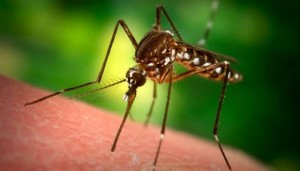
So there’s no threat to your life, just your sanity! Seriously, the best way to combat them is with bug-screen hats, jackets, etc. Repellent containing DEET also works, but it’s a chemical and not the only solution. They are always worse in the evening and walking through grass or bush will stir them up.They are attracted to dark colours, so dress light. More on mosquitos another time…
Many people get nervous when they realize they’ll be paddling and camping in bear country. In fact, about 75% of Alberta is Bear country, but it’s the part of the province with the least population. So many people are unfamiliar with bears and what to do to avoid a bear encounter — and what to do if you have one.
The most important thing to do is KEEP YOUR WITS ABOUT YOU.
You should always keep your wits about you when you’re in the wilderness, but this comes into play especially when you see a bear. Stay calm, and observe the situation. Look at the bear, and see if it looks agitated, surprised, or angry. Look around for any cubs. See if the bear has an escape route; if it doesn’t appear to have one, try to give it one. Talk quietly so it knows you aren’t an animal. See if you can identify if it’s a Grizzly or Black Bear; refer to this BearSmart booklet for lots of great information about bear identification, bear behaviour, and what to do if you encounter a bear. A few highlights from that booklet include:
Everyone wishing to rent a canoe or kayak — or do any other type of outdoor recreation — in Northwestern Alberta should read the booklet before their trip.
You cannot tell the difference between the bears by colour; both Black bears and Grizzlies range from dark to blond colours.
The first thing to do is prevent encounters in the first place. You can do this by remembering that bears have a very keen sense of smell. Always think about what smells at your campsite, on your body, or in your tent. Keep your tent a smell-free zone — cook, wash dishes, store smelly clothes and all garbage about 100 m away from your tent. Do not sleep in the clothes you cooked or ate in. Put them in an airtight container or bag, or hang them in a tree (or between trees).
If you are walking on the shore looking for a spot to camp, go to the bathroom, or hang your food in a tree, be sure to make a little noise, so any bears in the bush nearby hear you and have the chance to get out of your way.
If you take these steps, you greatly reduce your chance of an encounter. Bears are not interested in eating you; they prefer other foods, such as plants, roots, insects, small mammals and animal carcasses. If you see wild strawberries, raspberries, or blueberries, devil’s club or wild sarsparilla, be extra-alert as these are some favourite foods.
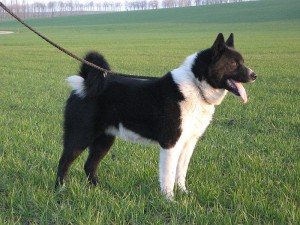
Improperly managed garbage, compost, dirty barbeques, pet food, fruit trees and berry bushes can attract bears. This leads to “problem bears” — but in reality, human behaviour is the problem. In researching this article, I came across a new strategy for “problem bears.” Rather than killing or relocating the bears, there’s a program that uses Karelian Bear Dogs to scare the bears and “teach” them not to come back. Bears are smart and this program is very successful.
For more about bear behaviour, surf the Bear Smart Society’s pages, in particular, this interesting page.
As mentioned in a previous post, it’s a bundle of fun cruising Google Earth or Google Maps looking at places to paddle. I decided to compile links to the maps for all our main paddling destinations here. When you click on a link, feel free to zoom in or out, or pan around to see more of the river or lake. I tried to position each starting point to be interesting in some way! Make sure you are viewing the maps in “satellite” mode.
Peace River
Hay River
Chinchaga River
Wabasca River
Hay-Zama Lake
Hutch Lake
Footner Lake
A few other interesting spots (somewhat harder to get to for paddling):
Margaret Lake
Bistcho Lake
Steen River
I love how on most of these maps, if you select “map” instead of “satellite” view, there’s nothing to see! No roads!
Also, did you notice you can see the Peace River from the home page for Google Maps? The default zoom level is 4, and you can easily see it’s stretched out “S” in Northern Alberta.
We had the most amazing northern lights a couple of nights ago! All I could say was “wow!” They almost filled the sky, dancing and wriggling… and now I have a new list: 30 words for Northern Lights!
| They looked like: | How they moved: | ||
|---|---|---|---|
| spikes | rippling | ||
| ribbons | wiggling | ||
| glowing curtains | dancing | ||
| freight trains | jumping | ||
| caterpillars | pulsating | ||
| cinnamon buns | brightening | ||
| galaxies | swirling | ||
| neon lights without the glass tube | migrating | ||
| thin veils | infusing | ||
| ghostly lights | wriggling |
They were the kind of northern lights that if you’re driving, you have to pull over or you’ll hit the ditch trying to look at them. They were life changing!
I really wish I had a picture to show you, but none of mine turned out. I was completely transfixed when they were at their peak, and by the time I got my camera, they were fading. And I was in a hurry, which never makes for good photos… and I kept wishing for a fisheye lens! So, I leave you with this one, found on this webpage, which is similar to what we saw (except the lights we had covered more of the sky).

Blogging about paddling in winter isn’t easy! Luckily, spring is in the air, with temps above zero every day and lots of sunshine! Snow is melting like mad, and melt-water is flowing wherever it can. The snow is wet, sticky, and heavy. I would know; I went snowshoeing the other day, and each foot weighed 10 lbs when even a little snow collected on top! Very heavy snow!
Isn’t it funny how many words for snow we have. I have so many, I wonder if I’m part Inuit or Eskimo! Have you heard the urban myth that Eskimos have hundreds of words for snow? I have, and I decided to investigate this.
Well, I’m not the first one; it seems like many people have commented on the origin of this myth, including linguists and historians. So, let me summarize:
Here is my list of favourite words (adjectives) for snow:
| Snow on the ground | Snow falling | |
|---|---|---|
| wet | big | |
| heavy | small | |
| sticky | tiny | |
| snowball-snow | flaky | |
| crusty | swirly | |
| dry | blinding | |
| powdery | stinging | |
| squishy | floating | |
| squeaky | fast | |
| crispy | hypnotizing* |
*Snow is hypnotizing when driving while it’s snowing and the snow-tunnel effect partially lulls you to sleep.
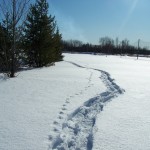
I found an online Inuktitut dictionary, and searching “snow” gave me 284 search results, including things like “snow for leaky snow house,” “snow house made from trodden snow,” — I don’t think any of them live in snow houses anymore! — and a more modern one, “aircraft blown snow.” I guess it’s like any language; there are many words in dictionaries we don’t really use, like galeanthropy (the delusion that one has become a cat). A quick look through the dictionary found some great adjectives, like sugar snow, feathery snow, soft snow, first snow, fresh snow, and refrozen snow. I’d love to use some of these, but I doubt I could to pronounce them!
In my research I came across this satirical list by Phil James. Perhaps you’ve seen it too — good for a laugh! I don’t think any of the words are real…
The Eskimos’ Hundred Words for Snow
by Phil James
| Word | Meaning |
|---|---|
| tla | ordinary snow |
| tlapa | powder snow |
| tlacringit | snow that is crusted on the surface |
| kayi | drifting snow |
| tlapat | still snow |
| klin | remembered snow |
| naklin | forgotten snow |
| tlamo | snow that falls in large wet flakes |
| tlatim | snow that falls in small flakes |
| tlaslo | snow that falls slowly |
| tlapinti | snow that falls quickly |
| kripya | snow that has melted and refrozen |
| tliyel | snow that has been marked by wolves |
| tliyelin | snow that has been marked by Eskimos |
| blotla | blowing snow |
| pactla | snow that has been packed down |
| hiryla | snow in beards |
| wa-ter | melted snow |
| tlayinq | snow mixed with mud |
| quinaya | snow mixed with Husky shit |
| quinyaya | snow mixed with the shit of a lead dog |
| slimtla | snow that is crusted on top but soft underneath |
| kriplyana | snow that looks blue in the early morning |
| puntla | a mouthful of snow because you fibbed |
| allatla | baked snow |
| fritla | fried snow |
| gristla | deep fried snow |
| MacTla | snow burgers |
| jatla | snow between your fingers or toes, or in groin-folds |
| dinliltla | little balls of snow that cling to Husky fur |
| sulitlana | green snow |
| mentlana | pink snow |
| tidtla | snow used for cleaning |
| ertla | snow used by Eskimo teenagers for exquisite erotic rituals |
| kriyantli | snow bricks |
| hahatla | small packages of snow given as gag gifts |
| semtla | partially melted snow |
| ontla | snow on objects |
| intla | snow that has drifted indoors |
| shlim | slush |
| warintla | snow used to make Eskimo daiquiris |
| mextla | snow used to make Eskimo Margaritas |
| penstla | the idea of snow |
| mortla | snow mounded on dead bodies |
| ylaipi | tomorrow’s snow |
| nylaipin | the snows of yesteryear (“neiges d’antan”) |
| pritla | our children’s snow |
| nootlin | snow that doesn’t stick |
| rotlana | quickly accumulating snow |
| skriniya | snow that never reaches the ground |
| bluwid | snow that’s shaken down from objects in the wind |
| tlanid | snow that’s shaken down and then mixes with sky-falling snow |
| ever-tla | a spirit made from mashed fermented snow, popular among Eskimo men |
| talini | snow angels |
| priyakli | snow that looks like it’s falling upward |
| chiup | snow that makes halos |
| blontla | snow that’s shaken off in the mudroom |
| tlalman | snow sold to German tourists |
| tlalam | snow sold to American tourists |
| tlanip | snow sold to Japanese tourists |
| protla | snow packed around caribou meat |
| attla | snow that as it falls seems to create nice pictures in the air |
| sotla | snow sparkling with sunlight |
| tlun | snow sparkling with moonlight |
| astrila | snow sparkling with starlight |
| clim | snow sparkling with flashlight or headlight |
| tlapi | summer snow |
| krikaya | snow mixed with breath |
| ashtla | expected snow that’s wagered on (depth, size of flakes) |
| huantla | special snow rolled into “snow reefers” and smoked by wild Eskimo youth |
| tla-na-na | snow mixed with the sound of old rock and roll from a portable radio |
| depptla | a small snowball, preserved in Lucite, that had been handled by Johnny Depp |
| trinkyi | first snow of the year |
| tronkyin | last snow of the year |
| shiya | snow at dawn |
| katiyana | night snow |
| tlinro | snow vapor |
| nyik | snow with flakes of widely varying size |
| ragnitla | two snowfalls at once, creating moire patterns |
| akitla | snow falling on water |
| privtla | snow melting in the spring rain |
| chahatlin | snow that makes a sizzling sound as it falls on water |
| hootlin | snow that makes a hissing sound as the individual flakes brush |
| geltla | snow dollars |
| briktla | good building snow |
| striktla | snow that’s no good for building |
| erolinyat | snow drifts containing the imprint of crazy lovers |
| chachat | swirling snow that drives you nuts |
| krotla | snow that blinds you |
| tlarin | snow that can be sculpted into the delicate corsages Eskimo girls pin to their whale parkas at prom time |
| motla | snow in the mouth |
| sotla | snow in the south |
| maxtla | snow that hides the whole village |
| tlayopi | snow drifts you fall into and die |
| truyi | avalanche of snow |
| tlapripta | snow that burns your scalp and eyelids |
| carpitla | snow glazed with ice |
Even with several inches of snow on the ground, I dream of spring and the paddling I will do! There are many reasons I like to paddle, especially on an extended trip, and I thought I’d share them with you!
“There is a serene and settled majesty to woodland scenery that enters into the soul and delights and elevates it, and fills it with noble inclinations.” – Washington Irving
Get away from it all. I’d say the number one reason for going paddling is to get away from all the pressures and stresses of everyday life. On the water, and at your wilderness campsite, there are no cell phones, emails, demands or traffic! A change of scenery is often what we need to change our perspective, remember what we love about our life, and return to our youth in child-like fun!
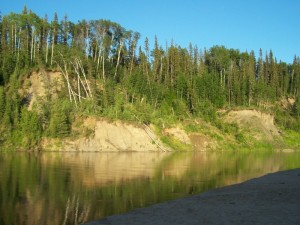
“Slow down and enjoy life. It’s not only the scenery you miss by going too fast — you also miss the sense of where you are going and why.” – Eddie Cantor
Silence. Serenity. It is so incredibly quiet… More than just getting away, you can also come to a place of deep rest. Then and only then does the built-up stress really leave! This is also a prime opportunity to evaluate where you’re going in life, and if you want to continue down that road. A long trip like 2 weeks on the Peace River gives you lots of time to decompress and think, which enables you to return to your life with a renewed sense of purpose and the impetus to make a change you’ve been long avoiding.
“. . . It’s worth recognizing that there is no such thing as an overnight success. You will do well to cultivate the resources in yourself that bring you happiness outside of success or failure. The truth is, most of us discover where we are headed when we arrive. At that time, we turn around and say, yes, this is obviously where I was going all along. It’s a good idea to try to enjoy the scenery on the detours, because you’ll probably take a few.” – Bill Waterson
Leave your job behind. Doing something outside of your normal routine gives you a chance to “cultivate the resources in yourself that bring you happiness outside of success or failure.” There’s no success or failure on the river; there’s no pressure to perform or succeed. You can practice just being happy where you are and realizing that it’s possible to be completely content, regardless of your accomplishments. Not everything in life is a competition, and if you’re in a very competitive career, why not get away from that for a while and reconnect with co-operation and a spirit of gratitude?
“That kind of thing makes me feel better… You’re out with people in beautiful scenery, and you’ve earned all the carbs you eat.” – Cindy Chupack
Have an active vacation. The other great thing about paddling is the exercise you’ll get! You might even “feel the burn” a little! You decide how hard you want to work, unless your friends/family are all intent to conquer the river in a day! Then you’ll have to keep up! So choose your paddle partners wisely!
Fresh air, peaceful waters, moving your body, and enjoying the scenery… what could be better? 🙂
In doing research for the Trip Ideas page, I found a webpage from the Alberta government for ice monitoring in major rivers. I didn’t even know the government did that! It’s not like the old days, when people used the river for transportation and really needed to know when it was breaking up or how far the ice had retreated. This webpage will be great for us though, to see how open the Peace River is and when we can get out there in spring!
It doesn’t look like they monitor the freeze up, though — I only see reports for break-up. The scientist in me wants more data, but the paddler in me is satisfied with spring conditions only; the water stays open in autumn far longer than one would actually want to paddle it — November is just a bit too cold for most of us! Unless you’re training for an Arctic expedition, in which case, bring it on! 🙂
There’s an interactive ice conditions map, which shows the ice front (the image below is not interactive, though):
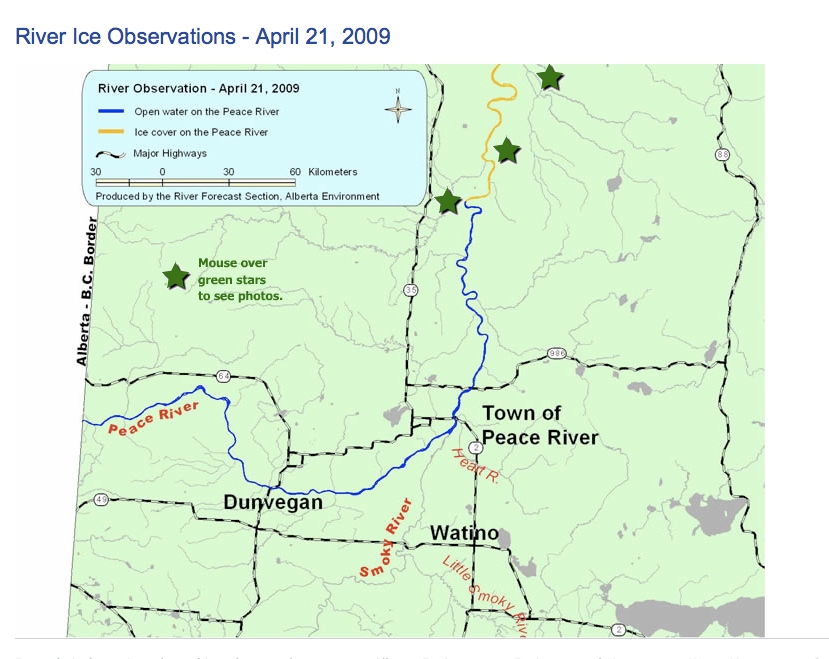
This is what you see when you mouseover the green star near the ice front (the most southern star):
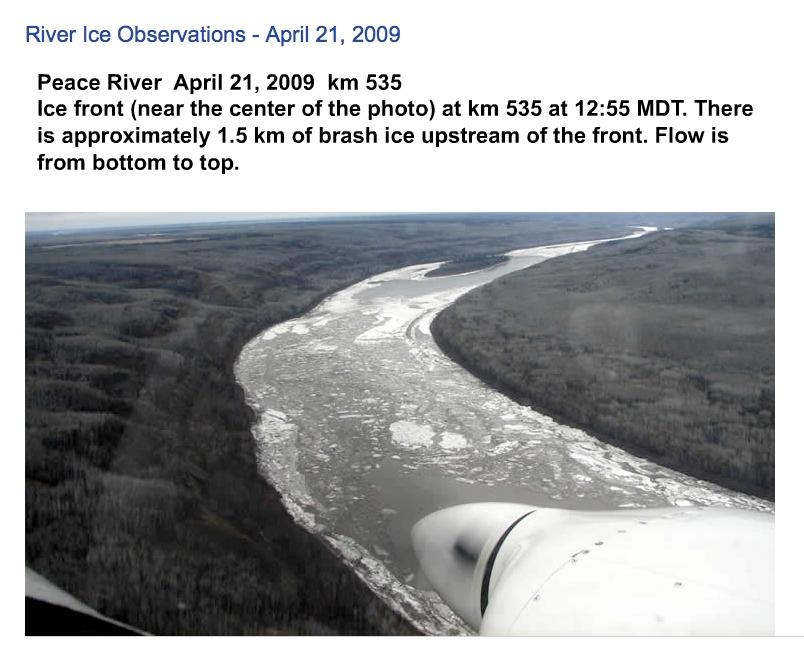
Both these were taken from screen shots from the April 21, 2009 report. Photos courtesy of Alberta Environment.
So, besides water levels, weather info, rainfall, we now have access to ice reports as well. If only there were strategic webcams… I wonder how hard that would be? If AMA can do it for road conditions, why can’t we make one for river conditions? 🙂
As usual, time is flying by and autumn’s long gone, replaced by the snow and cold of winter. All the lakes around here are covered in ice, although the rivers aren’t completely frozen over. I’m not sure if the ferry at Tompkins Landing is still operating, or if they are using the ice road yet. It’s less than a month to the shortest day of the year, winter solstice, and while it’s instinctual to hunker down and wait it out, that’s just not practical!
So what to do for the winter? While other sports or hobbies — some of them indoors — take front stage, it’s still fun planning the next trip, or a new place to explore. Cruising Google Earth* is a great way to see the world from above; some areas capture your attention and just make you want to go!
Another great thing to do over the winter is work on your health and vitality. You might think winter is the time when your health goes downhill (during the “flu season”), but it doesn’t have to be that way. Let me share 3 simple things I do to help keep myself healthy over the cold months:
1. Take Vitamin D. Vitamin D is not a vitamin at all — it’s a chemical produced in the skin naturally when you’re in the sun. But, in winter especially, there’s a very good chance you are Vitamin D deficient. Unless you live in the tropics and spend lots of time outside, you should take 1,000 to 4,000 UI of Vitamin D daily. What’s it good for? Vitamin D is important to so many body functions, it’s hard to list them all! Your immune system, heart, nerves, muscles and bones, and your mood will all benefit from more Vitamin D. For more info, check out the Vitamin D Society’s webpage or this page.
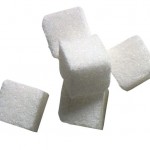
2. Limit your sugar intake. Sugar is an immune-system inhibitor, so if you suspect your immune system is weak, avoid sugary foods. Sugar replacements are not a good alternative, unfortunately, as most are treated as a toxin that your liver has to process. Stick to honey as a sweetener, or just eat fruit! Sugar competes with Vitamin C, an essential vitamin for immune system function, so if you know you have eaten a fair bit of sugar, take extra Vitamin C, or eat foods loaded with it, to counteract the sugar.
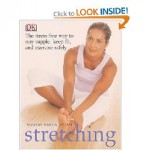
3. Stay active. If you’re like me, you’d rather be doing something fun and active outside, but when it’s -25°C, or just plain dreary, it’s tough. Why not try a nice, warm indoor alternative? You could try yoga, rebounding, swimming, t’ai chi, or even just simply stretching. I’ve got Stretching by Suzanne Martin and highly recommend it.
Whatever you do, keep a positive attitude about it! If you tell yourself that what you’re eating or doing isn’t healthy, then it won’t be.
* If you don’t have Google Earth on your computer, try Google Maps. Select “satellite” from the top right-hand corner of the image, and you will see the same imagery that’s used in Google Earth (it works best with a fast internet connection).

